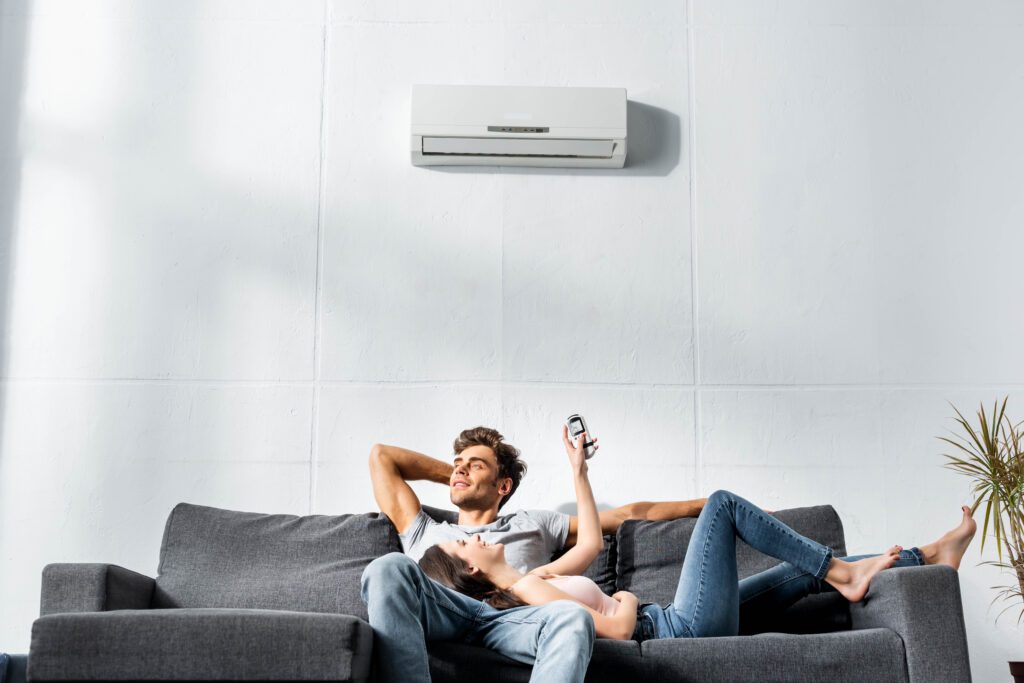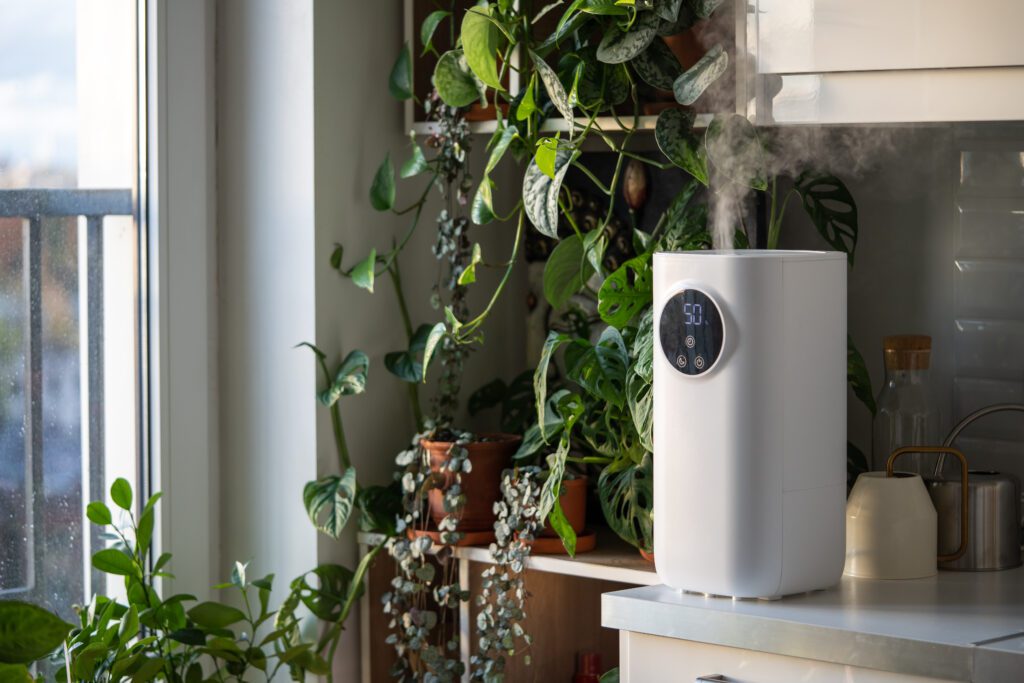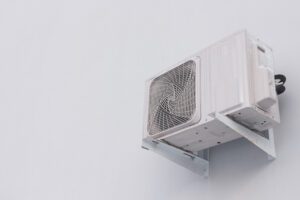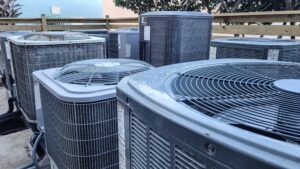Studies have shown that the quality of indoor air can have a significant impact on our health and well-being. With most people spending a considerable amount of time indoors, it is crucial to understand and improve indoor air quality. This ultimate guide to improving indoor air quality will take you through everything you need to know about indoor air quality, its importance, the health effects of poor air quality, methods to assess and test air quality, and strategies to improve it.
Understanding Indoor Air Quality
Before diving into the specifics, let’s start by exploring what exactly indoor air quality is. Indoor air quality refers to the quality of the air inside buildings, including our homes, offices, schools, and other indoor spaces. It involves analyzing the presence of pollutants, chemicals, and other factors that can affect the air we breathe.
What is Indoor Air Quality?
Indoor air quality is a measure of the cleanliness and freshness of the air within an enclosed space. It is influenced by various factors, including the presence of pollutants such as dust, pollen, pet dander, mold spores, volatile organic compounds (VOCs), and the ventilation and humidity levels of the area.
Why is Indoor Air Quality Important?
The importance of indoor air quality cannot be overstated. Poor air quality can lead to a range of health issues, from short-term irritation and allergies to long-term respiratory problems and even serious diseases. Additionally, indoor air quality can affect our overall comfort, productivity, and quality of life.
Common Pollutants Affecting Indoor Air Quality
Understanding the common pollutants that affect indoor air quality is crucial for identifying and addressing potential sources of contamination. Some of the most prevalent indoor air pollutants include:
- Dust and dust mites
- Pollen
- Pet dander
- Mold and mildew
- Tobacco smoke
- Cleaning products
- Chemicals from building materials and furniture
Dust and dust mites, for example, are microscopic particles that can accumulate in our indoor spaces and trigger allergies or asthma symptoms. They can be found in carpets, upholstery, bedding, and even in the air. Regular cleaning and vacuuming can help reduce their presence and improve indoor air quality.
Pollen, another common indoor air pollutant, is often brought indoors through open windows or carried on clothing and shoes. For individuals with allergies, exposure to pollen can cause sneezing, itching, and congestion. Keeping windows closed during high pollen seasons and regularly cleaning and replacing air filters can help minimize its impact on indoor air quality.
The Impact of Poor Indoor Air Quality on Health

Poor indoor air quality has been linked to various health issues, particularly affecting the respiratory system. It is important to be aware of the potential health effects associated with poor air quality to take the necessary steps for improvement.
Indoor air quality is not only influenced by external factors like pollution and allergens but also by internal sources such as cleaning products, building materials, and even certain types of furniture. Volatile organic compounds (VOCs) released by these sources can contribute to indoor air pollution, affecting the health of occupants over time.
Respiratory Issues Linked to Poor Air Quality
Poor indoor air quality can trigger or exacerbate respiratory conditions, such as asthma, bronchitis, and allergies. Dust, pollen, and other allergens can irritate the respiratory system, causing coughing, wheezing, chest tightness, and difficulty breathing.
In addition to respiratory issues, poor indoor air quality can also impact cognitive function and overall well-being. Studies have shown that exposure to indoor air pollutants can lead to decreased productivity, impaired concentration, and even mood disturbances. Improving air quality in indoor spaces is not only beneficial for physical health but also for mental health and productivity.
Allergies and Indoor Air Quality
Allergies are a common result of exposure to indoor air pollutants. Dust mites, pet dander, mold spores, and pollen can cause allergic reactions, leading to symptoms like sneezing, itching, runny nose, and watery eyes.
It is essential to address the root causes of poor indoor air quality to effectively manage allergies and respiratory issues. Implementing proper ventilation, using air purifiers, and reducing sources of indoor pollution can significantly improve the air quality in homes and workplaces, creating a healthier environment for occupants.
Long-term Health Effects of Poor Indoor Air Quality
Extended exposure to poor indoor air quality can have severe long-term health consequences. It has been linked to respiratory diseases, cardiovascular issues, impaired lung function, and even certain cancers. It is essential to prioritize improving indoor air quality to safeguard our long-term health.
Furthermore, poor indoor air quality can disproportionately affect vulnerable populations such as children, the elderly, and individuals with pre-existing health conditions. Children, whose respiratory and immune systems are still developing, are particularly susceptible to the effects of indoor air pollution. Similarly, individuals with chronic respiratory conditions like COPD or asthma may experience worsened symptoms in environments with poor air quality, emphasizing the importance of creating clean and healthy indoor spaces for all individuals.
Assessing Your Indoor Air Quality


Now that we understand the importance of indoor air quality and its potential impacts, it is time to assess the air quality in our living spaces. This will help us identify any issues and take appropriate measures to improve it.
Indoor air quality is crucial for our health and well-being, as we spend a significant amount of time indoors. Poor air quality can lead to various health problems, including respiratory issues, allergies, and even more severe conditions in the long term. Therefore, being proactive about assessing and improving indoor air quality is essential for creating a healthy living environment.
Signs of Poor Indoor Air Quality
Several indicators can point to poor indoor air quality. These include excessive dust accumulation, musty or unpleasant odors, mold or mildew growth, frequent allergies or respiratory symptoms, and visible signs of moisture or water damage. Being aware of these signs can help us identify potential issues.
Moreover, poor indoor air quality can also impact our cognitive abilities and overall productivity. Studies have shown that high levels of indoor pollutants can lead to decreased focus, increased fatigue, and even cognitive impairment over time. By recognizing the signs of poor air quality early on, we can take steps to mitigate these effects and create a healthier indoor environment.
Professional Air Quality Testing
If you suspect severe air quality issues or want a comprehensive evaluation, it is advisable to seek professional air quality testing services. These professionals use specialized equipment to measure pollutant levels, assess ventilation, and provide detailed reports on the overall air quality of your space.
Professional air quality testing can provide valuable insights into the specific pollutants present in your indoor environment, such as volatile organic compounds (VOCs), radon, carbon monoxide, and particulate matter. Understanding the composition of indoor pollutants can help in implementing targeted solutions to improve air quality and ensure a healthier living space for you and your family.
DIY Methods for Testing Air Quality
In addition to professional testing, there are some DIY methods to assess air quality. These include using air quality monitors, checking humidity levels with a hygrometer, inspecting for mold growth, and testing for specific pollutants using home test kits. While these methods may not provide as accurate results as professional testing, they can still give you a general idea of your air quality.
Regularly monitoring and testing indoor air quality is a proactive approach to maintaining a healthy living environment. By combining both professional assessments and DIY methods, you can gain a comprehensive understanding of your indoor air quality and take necessary steps to ensure the well-being of everyone in your home.
Strategies for Improving Indoor Air Quality


Once you have identified the issues affecting your indoor air quality, it’s time to implement strategies to improve it. There are several effective methods for enhancing indoor air quality that can make a significant difference in your living environment.
Regular Cleaning and Maintenance
A clean living space goes a long way in maintaining good air quality. Regularly clean your home, including dusting surfaces, vacuuming carpets, and washing bedding. This not only removes visible dirt and dust but also eliminates hidden allergens and irritants that can affect your respiratory health. Additionally, ensure proper maintenance of HVAC systems, filters, and ventilation systems to prevent the accumulation of pollutants. Regularly replacing filters and scheduling professional maintenance can help ensure that your indoor air remains clean and fresh.
Air Purifiers and Their Benefits
Investing in air purifiers can be highly beneficial in improving indoor air quality. Air purifiers work by capturing and filtering out airborne pollutants, such as dust, pollen, pet dander, and mold spores. They can significantly reduce the number of allergens and irritants present in the air, providing cleaner and fresher indoor air. When choosing an air purifier, consider the size of your space and the specific pollutants you want to target. Some purifiers are designed to remove specific allergens, while others offer broader filtration capabilities.
Importance of Proper Ventilation
Proper ventilation plays a crucial role in maintaining good indoor air quality. It allows fresh air to circulate while expelling pollutants and moisture. Ensure that your home has adequate ventilation, whether through windows, vents, or mechanical ventilation systems. Regularly open windows to let in fresh air, especially when cooking or using chemicals. Additionally, consider installing exhaust fans in areas prone to high humidity, such as bathrooms and kitchens, to prevent the buildup of mold and mildew. By ensuring proper ventilation, you can create a healthier and more comfortable living environment.
Role of Indoor Plants in Improving Air Quality
Indoor plants not only beautify our living spaces but also have the ability to improve air quality. They naturally filter the air, absorbing some pollutants and releasing oxygen. Some plants, like snake plants and peace lilies, have been found to be particularly effective in removing certain toxins. Introducing indoor plants can enhance the aesthetics of your home while purifying the air you breathe. However, it’s important to note that not all plants are suitable for indoor environments, so do some research to find the right plants for your specific needs.
Improving indoor air quality requires a combination of understanding, assessment, and implementation of appropriate strategies. By following these guidelines and making conscious efforts to prioritize indoor air quality, you can create a healthier and more comfortable living environment for yourself and your loved ones. Remember, the air you breathe has a direct impact on your well-being, so take the necessary steps to ensure that it is clean and fresh.
Furthermore, it’s worth noting that maintaining a healthy indoor environment goes beyond air quality. Factors such as lighting, temperature, and noise levels also contribute to your overall well-being. Consider incorporating natural light sources, using energy-efficient lighting, and managing noise pollution to create a harmonious living space. Additionally, maintaining a comfortable temperature and humidity level can help prevent the growth of mold and mildew, as well as promote better sleep and overall comfort.



